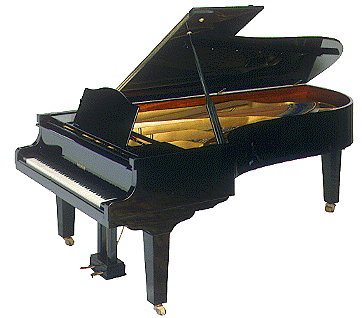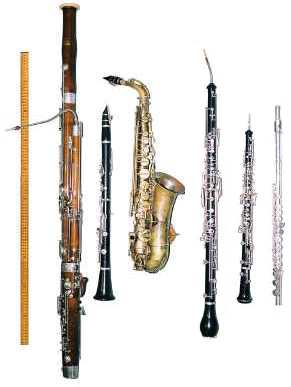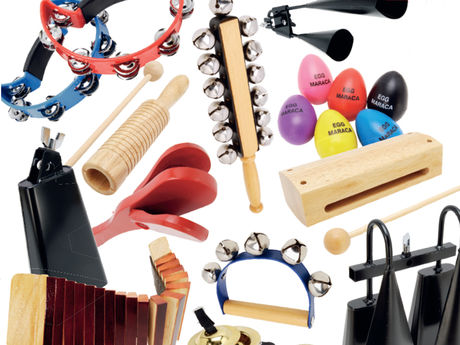Unit 5
If you want to download it click here
UNIT 5: LISTENING
1. Instrument families
There are different ways to classify musical instruments. One way is to group them as they are in a Western orchestra: strings, woodwinds, brass, and percussion.cuerda, viento madera, viento metal y percusión
1.1. String instruments
A string instrument is a musical instrument that produces sound by strings that vibrate. The most common string instruments are violin, cello, viola, double bass, guitar, and harp.
All string instruments produce sound from one or more vibrating strings. The body of the instrument then transmits the sound to the surrounding airaire que lo rodea. They are usually categorizedclasificados by the technique used to make the strings vibrate. The three most common techniques are bowing, plucking, and striking.frotada, punteada y percutida.
1.1.1. Bowed strings
Bowing is a method used in some string instruments, including the violin, viola, cello, and the double bass. The bow consists of a stick with many hairs stretched between its endsvara con muchas cerdas tensadas entre sus extremos that make the string vibrate.
1.1.2. Plucked strings
Plucking is the method of playing by using a finger or by some type of plectrumpúa on instruments such as the guitar, harp or lute. This category includes keyboard instruments such as the harpsichord, which uses featherspluma (now plastic plectra) to pluck the strings.
1.1.3. Struck strings
The third common method of sound production in stringed instruments is to strike the string with a hammermartillo o macillo. By far the most well-known instrument to use this method is the piano.
A woodwind instrument is a musical instrument which produces sound when the player blows air against an edgebisel or a thin piece of wood called a reedlengüeta. Most of these instruments were originally made of wood, but some, such as the saxophone and some flutes, are now commonly made of other materials like metals or plastics.
Types of woodwind instruments:
-Single-reedlengüeta simple instruments use just one reed. When air is forced between the reed and the mouthpiece, the reed vibrates, creating the sound. Single reed instruments include the clarinet and saxophone families.
-Double-reedlengüeta doble instruments use two small pieces of cane joined together at the basepiezas de caña unidas juntas a la base. The air vibrates between the two pieces of cane. Double-reed instruments include the oboe, the cor anglais or the bassoonel corno inglés o el fagot .
-Flutes produce sound when air is blown across a hole. Flutes include transverse flutes and the recorder family.
A brass instrument is a musical instrument whose tone is produced by vibration of the player’s lips into an "embouchureembocadura". Modern brass instruments generally come in one of two families: valved brass instrumentsinstrumentos de válvulas that use a set of valves to change the pitch and slide brass instrumentsinstrumentos de varas that use a slide to change the length of tubing. The main brass instruments are the horn, the trumpet, the trombone and the tuba.
[WIND INSTRUMENTS]
1.4. Percussion instruments
A percussion instrument is any object which produces a sound by being hit with an implementinstrumento, shaken, rubbed, scrapedto shake: agitar;to rub: frotar; to scrap: rasgar?, or by any other action which
makes the object vibrate.
When classifying instruments by function it is useful to note if a percussion instrument makes a definite pitch or indefinite pitch. For example, some percussion instruments (such as the marimba and timpani) produce an obvious fundamental pitch and can therefore play melody and serve harmonic functions in music. Other instruments (such as drum and crash cymbalplato) produce sounds with such complex overtones and a wide range of prominent frequenciesfrecuencias destacadas that one can’t distinguish a pitch. Some of the main percussion instruments are the drum, the timpani, the xylophone, the vibraphone, the marimba or the triangle.
Finally, the electrophones are instruments that keep their acoustic resonators but are also amplified and altered electronically, for instance the electric guitar.
2. The orchestra
An orchestra is an instrumental ensemble, usually with string, brass, woodwind sections, and possibly a percussion section as well. A smaller orchestra (of about fifty musicians or fewer) is called a chamber orchestra. A full size orchestra (about 100 musicians) may sometimes be called a symphony orchestra.
Conducting is the act of directing a musical performance by using visible gestures. Orchestras, choirs, concert bands and other musical ensembles often have conductors.












